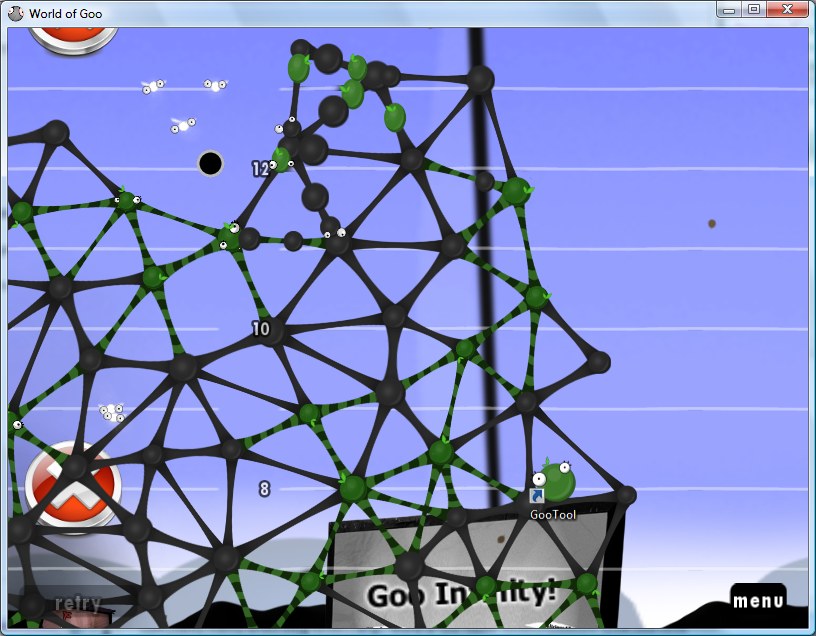

"The only real goal was to make something as cool as possible, and better than the other teams," Gabler says. Its students were split into teams, each with a mix of artists and engineers, then given an open-ended directive to build animated videos. He found more success in a computer science class with a self-directed twist. "I can click notes into my computer, though." "I can't sing a correct pitch, and I've got no ability to perform any sort of rhythm," he says when describing his low grades in music classes. Instead, Gabler dabbled extensively with makeshift toys and construction projects: "water chutes and mazes made out of aluminum foil and cardboard rolls taped to a wall, an articulated hand made out of plastic coat hangers and paper clips, LEGO robots that walk with six legs, or whatever else I could make out of junk I found in the trash." (It's easy to imagine cardboard-and-trash versions of some of World of Goo's boundary-pushing levels, which ask players to transport blobs through murky, swampy environs that sometimes contain blob-slicing razor blades.)īy the time he began attending the University of Virginia for undergrad, Gabler focused his studies on that construction mindset (computer engineering, electrical engineering) with a pinch of music. The idea of making his own games never came to pass as a child, even though his father encouraged computer use by providing QBasic programming puzzles. "Kids these days will never understand the true terror that is a capital letter H," he says.

Gabler's gaming fandom originally began with a 286 computer provided by his father, himself a programmer, and he recalls nascent game influences like early Sierra fare and action games made up of ASCII-symbol monsters.
#World of goo tower of goo Pc#
The heyday of his favorite PC adventure games had long passed "once games turned 3D, I couldn't handle them anymore." He describes the variety of drab crates found in 3D games at the time-which he colorfully describes as "brown, tan, or light brown"-as a footnote for the fact that he had "pretty much stopped playing games" by the year 2005. "Do you remember video games in the early 2000s?" Gabler says from his current island home. Though be warned: each story comes with the signature self-deprecating wit that made the original game so memorable. On the eve of the retail game's 15th anniversary, WoG co-creator Kyle Gabler and former Nintendo of America digital content head Dan Adelman offer stories about the game's rise from a game-jam experiment to an international sensation.
#World of goo tower of goo full#
Its bizarre plot spoke to the repercussions of mining an unknown substance to generate energy, a full year before the film Avatar showcased its own blockbuster take on the same concept.Īnd it somehow became one of the biggest games on that year's white-hot Nintendo Wii console, all without a traditional disc version on that system. It asked players to do little more than point-and-build, beating Minecraft to a similar spiritual core by two years.
#World of goo tower of goo series#
The physics-driven puzzle game revolved around building a series of structures-bridges, towers, pulleys, levers, and more-out of thousands of little, squealing balls of goo.

Long before players and developers alike would take those bullet points for granted, one game emerged 15 years ago to combine them into something memorable: World of Goo.


 0 kommentar(er)
0 kommentar(er)
